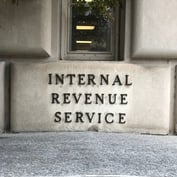What You Need to Know
- Stock and bond prices haven't always been negatively correlated.
- According to PGIM, sustainable fiscal policy, independent and rules-based monetary policy and demand-side shifts tend to support negative stock-bond correlation.
- Continued low interest rates may be insufficient to support the current negative stock-bond correlation, PGIM says.
PGIM, Prudential Financial’s asset management arm, put out a white paper recently that examines the role of stock-bond correlation in institutional portfolio construction. The study also looks at the historic context of this correlation, and suggests scenarios for investors to consider if the correlation regime should shift.
Stocks and bonds have been negatively correlated for the past 20 years, acting as a reliable hedge for each other, according to PGIM. This correlation has helped to lower portfolio volatility without reducing allocations to stocks.
However, in the preceding 30 years, from the late 1960s to the late 1990s, the correlation was reliably positive.
What factors lead to a regime shift? PGIM found that a regime change is driven, in part, by changes in the macroeconomic and policy backdrop.
Based on 70 years of U.S. history, the sign of stock-bond correlation regimes rests on three macroeconomic pillars: fiscal policy sustainability; monetary policy independence, credibility and predictability; and the balance between demand and supply-side economic drivers.
According to PGIM, sustainable fiscal policy, independent and rules-based monetary policy and demand-side shifts tend to support negative stock-bond correlation. Unsustainable fiscal policy, discretionary monetary policy, monetary-fiscal policy coordination and supply shifts tend to support positive correlation.









 May 25, 2021 at 04:07 PM
May 25, 2021 at 04:07 PM











